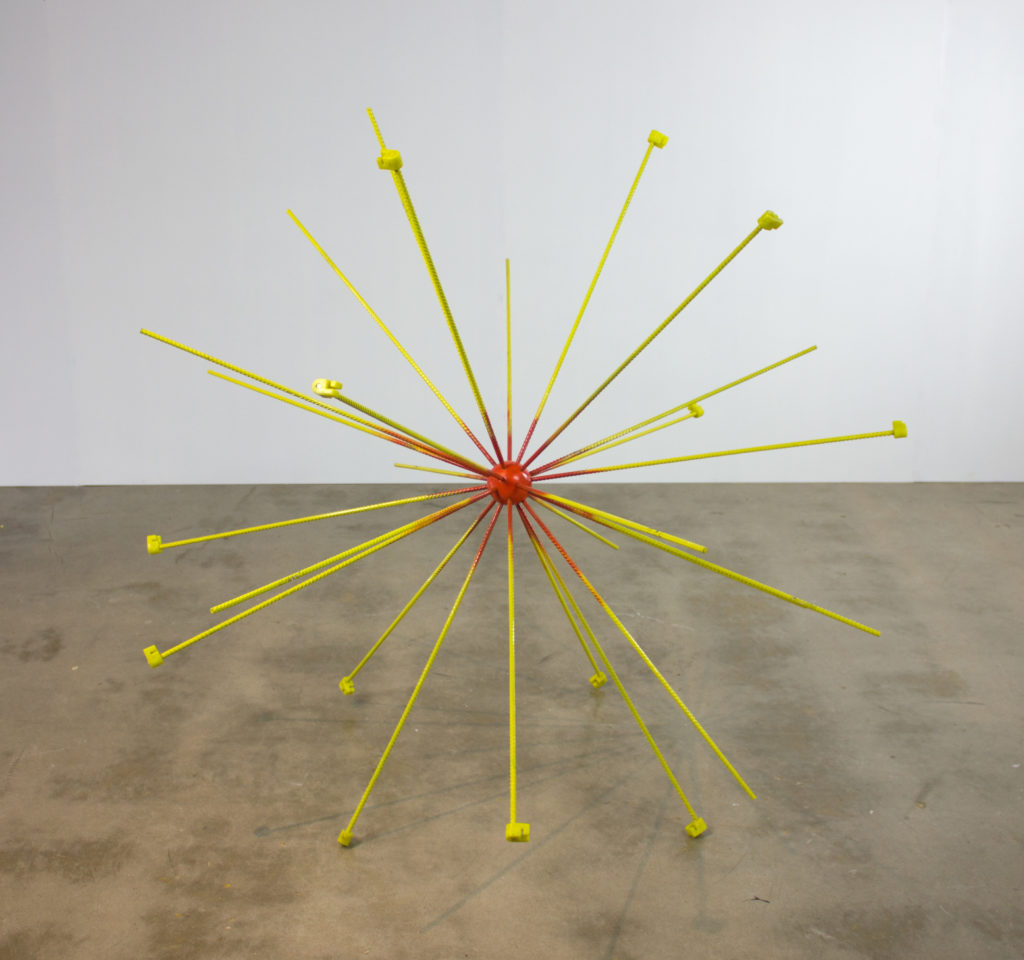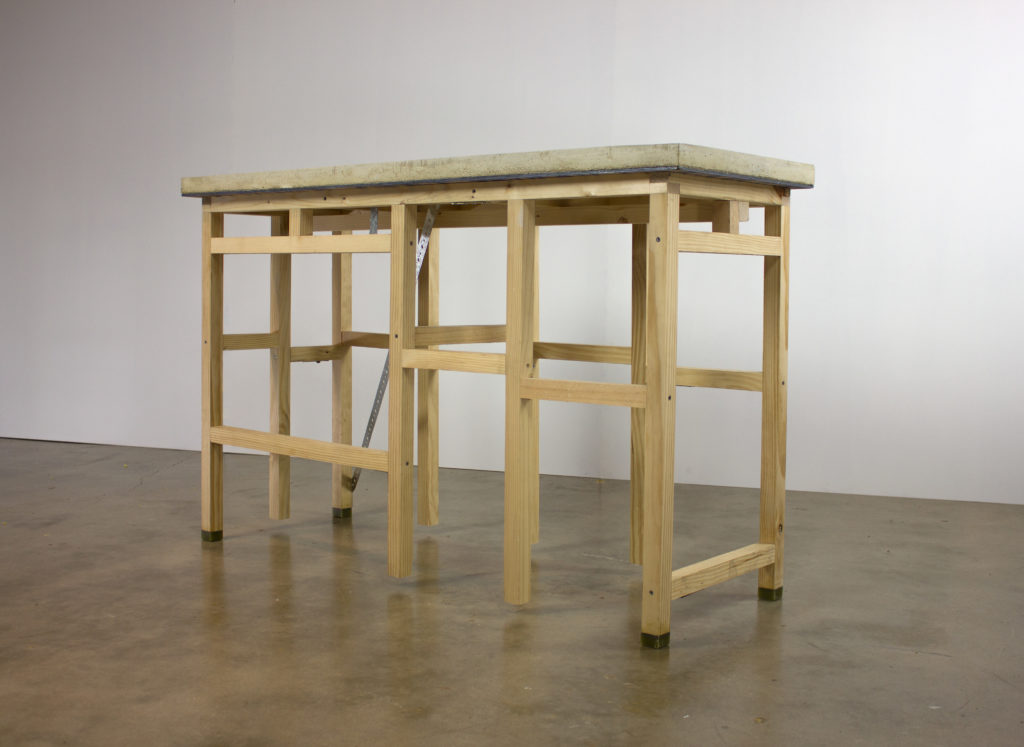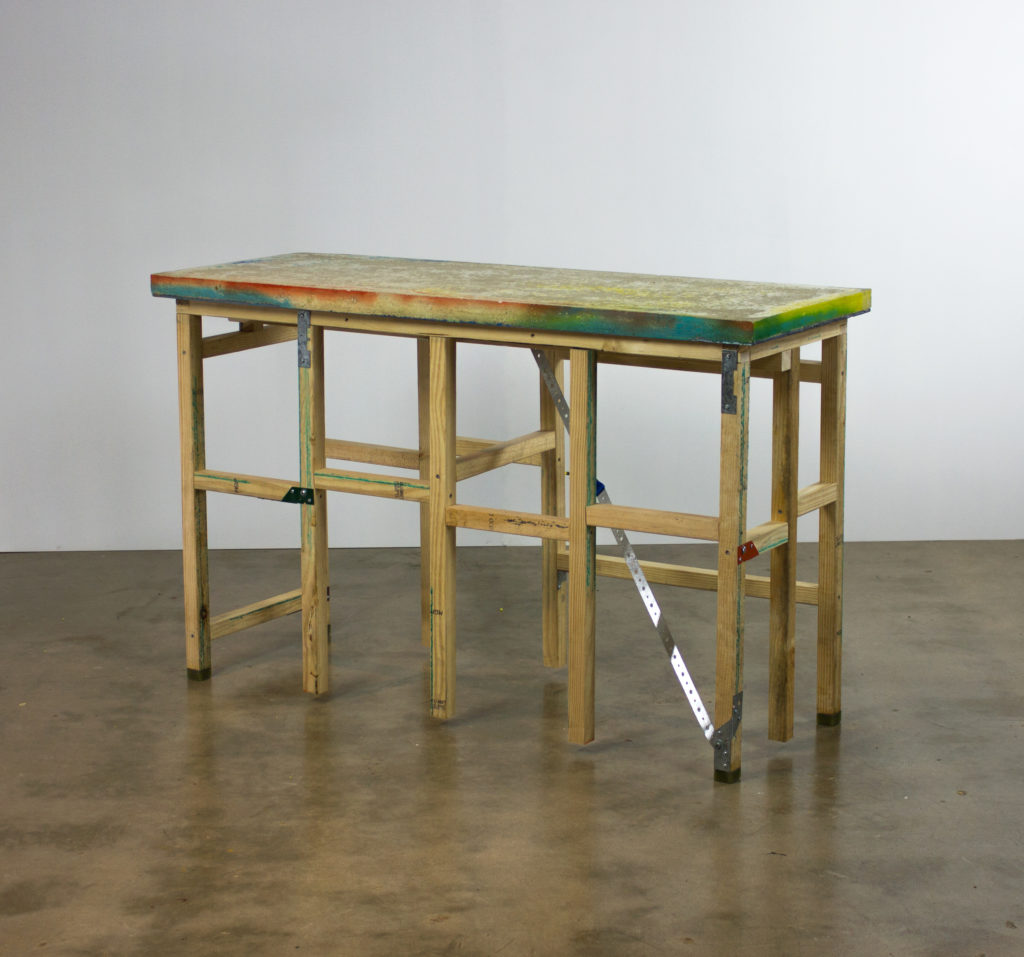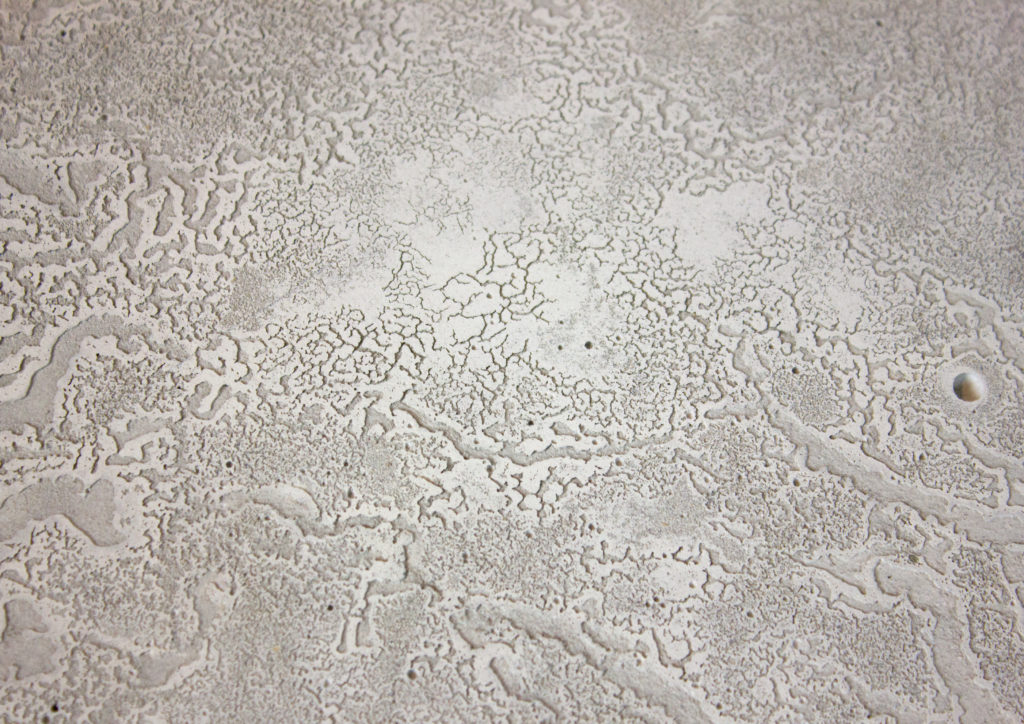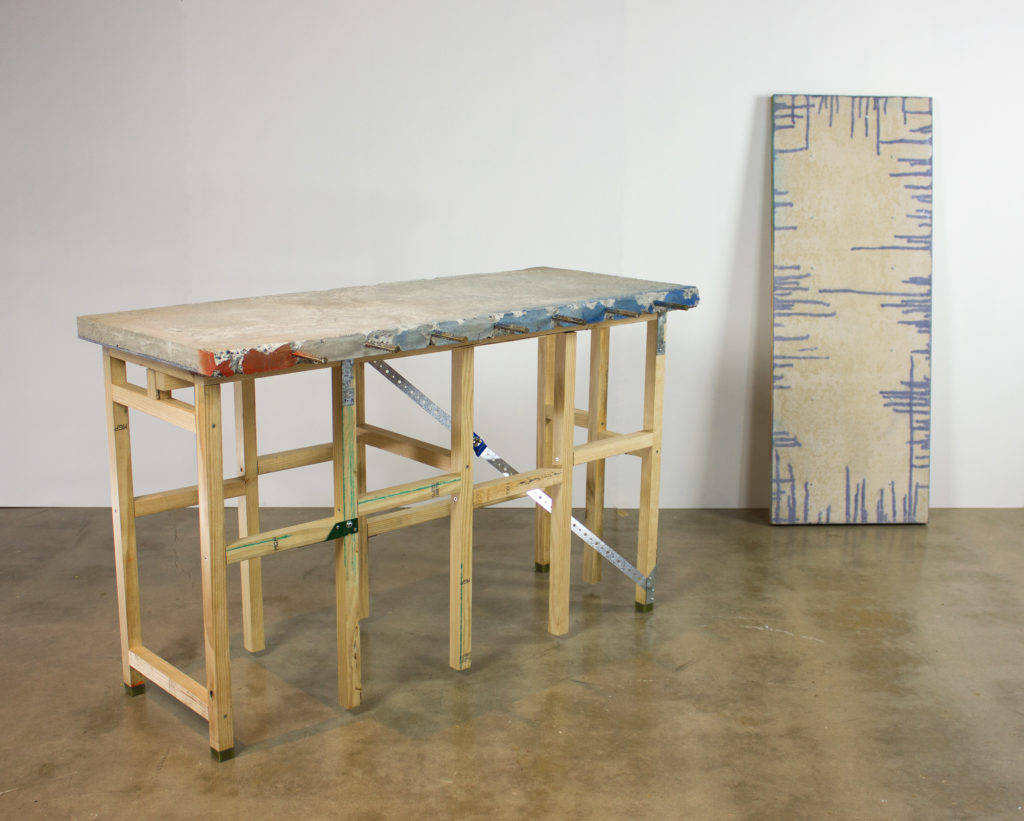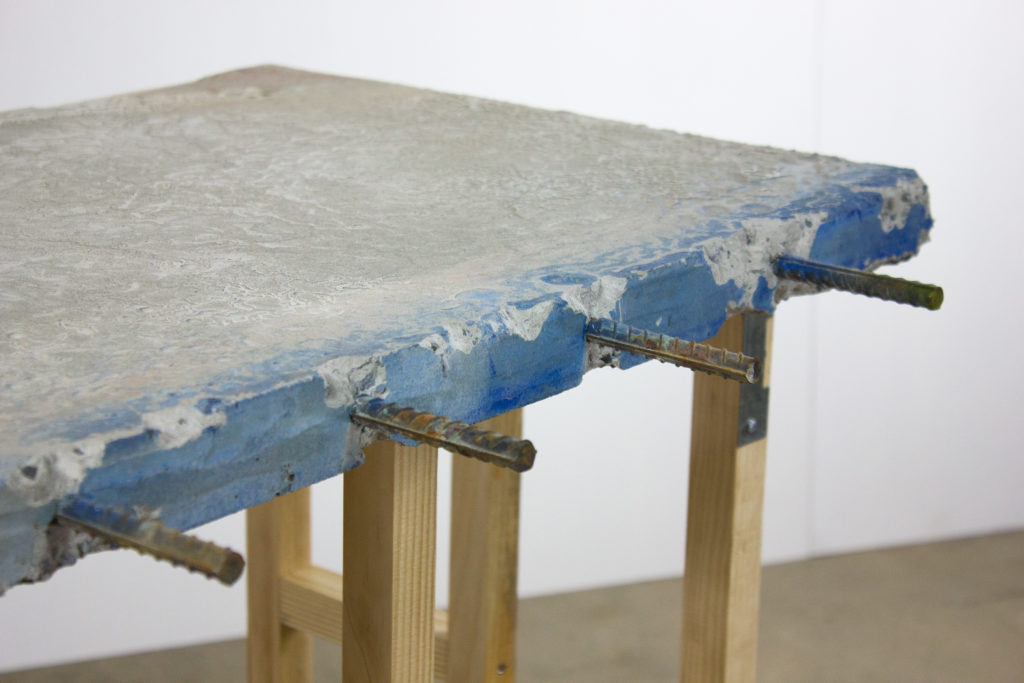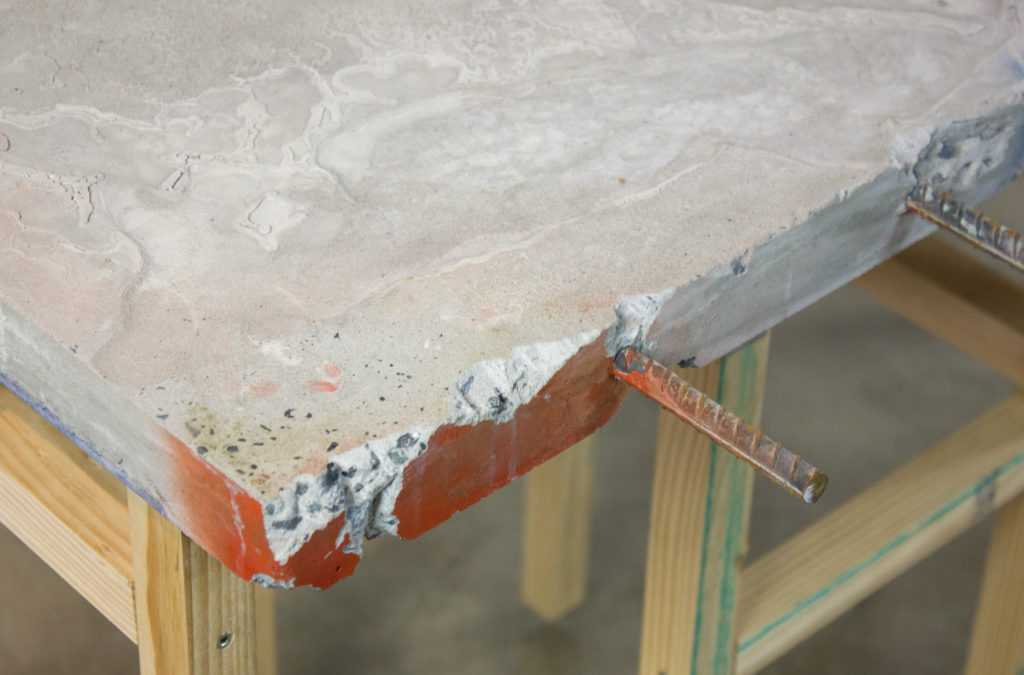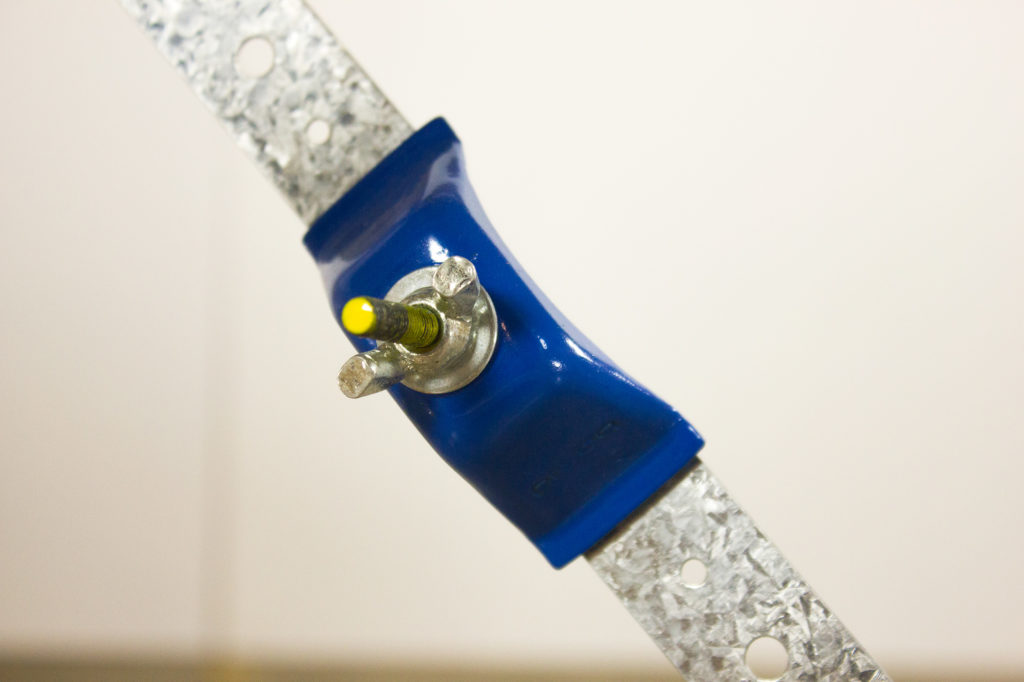Objects for Architects
In 2015 I contributed works to the show Unmaking Waste: Transforming Production and Consumption in Time and Place at the SASA Gallery in Adelaide. The exhibition was run alongside the Unmaking Waste Conference, for which I contributed a paper concerning the high obsolescence of steel reinforced concrete. Both the exhibition and conference featured some key players in the global development of sustainability theory and practice, such as Stuart Walker from Lancaster University.
Two concrete table surfaces, one supported by a analog of a timber frame house design, were presented in alongside a sculpture made from construction markers (an abstracted asterix or carton explosion mark) in front of a chalk walk drawing. Details of the exhibitions, in situ images and photographs of the wall drawing are over in a older post here. These images were taken later in the Jam Factory showroom.
Affected by the building of timber frame houses I saw springing up on the outskirts of Adelaide, that I saw on my way cycling to the Adelaide Hills on weekends, I developed a work that sought to re-materialise the sensory capacities of construction materials, such as concrete, timber joist, paint, joinery fixtures etc. Actually, timber frame housing is quite cool in its design evolution and relatively sustainable for low-density housing purposes – in contrast to steel reinforced concrete, for example – but nonetheless I wanted to bring into perception the vast number of materials and material expressions that reside inside a ordinary, suburban dwelling.
The table was designed to present two contrasting appearances when viewed from opposite angles: clean from one side….
…and rough from the other.
On the second slab, I experimented with the concrete casting, and was intrigued to discover an interesting effect if a box cover was clamped over the mould to tamp the concrete. The effect is somewhat like the cracking of mud in a drying river bed, with some unexpected fractal-like patterns.
This is the full list of materials used in the works:
Timber stud offcuts (pine tree),
Concrete (cement [cooked and crushed limestone {calcium carbonate ~shells, corals and the bodies of other sea animals composited into rock over millions and millions of years~} with a pozzolanic material {probably fly ash [coal fired power plant byproduct], sand and aggregate [unknown rocks and minerals]),
Rebar (steel [iron, carbon and alloyed metals that might include molybdenum, manganese, chromium or nickel, and possibly tungsten or cobalt]),
Drywall (paper {wood pulp [trees and possibly other fibrous plants]}, gypsum plaster {calcium sulfate dihydrate ~a sedimentary rock~}]),
Spray paint (unknown petrochemical polymers and hydrocarbon propellant {petroleum [the bodies of plants, animals and other living organisms aneorobically decomposed over millions and millions of years]}),
Gold (via electroplating, probably containing some other alloyed metals, likely a nickel base),
Copper (probably containing some other alloyed metals),
Shellac (ethanol and the resin secreted by the female lac bug [Kerria lacca]),
Galvinsed steel brackets (steel and zinc),
Epoxy resin (polyepoxides thermosetting polymer {petroleum},
Steel screws (carbon, iron and other metals)
Brass screws (copper, zinc and other alloyed metals that might include aluminium, iron, silicon, manganese or tin),
Star plugs (unknown plastic, probably petroleum-derived polymer).
